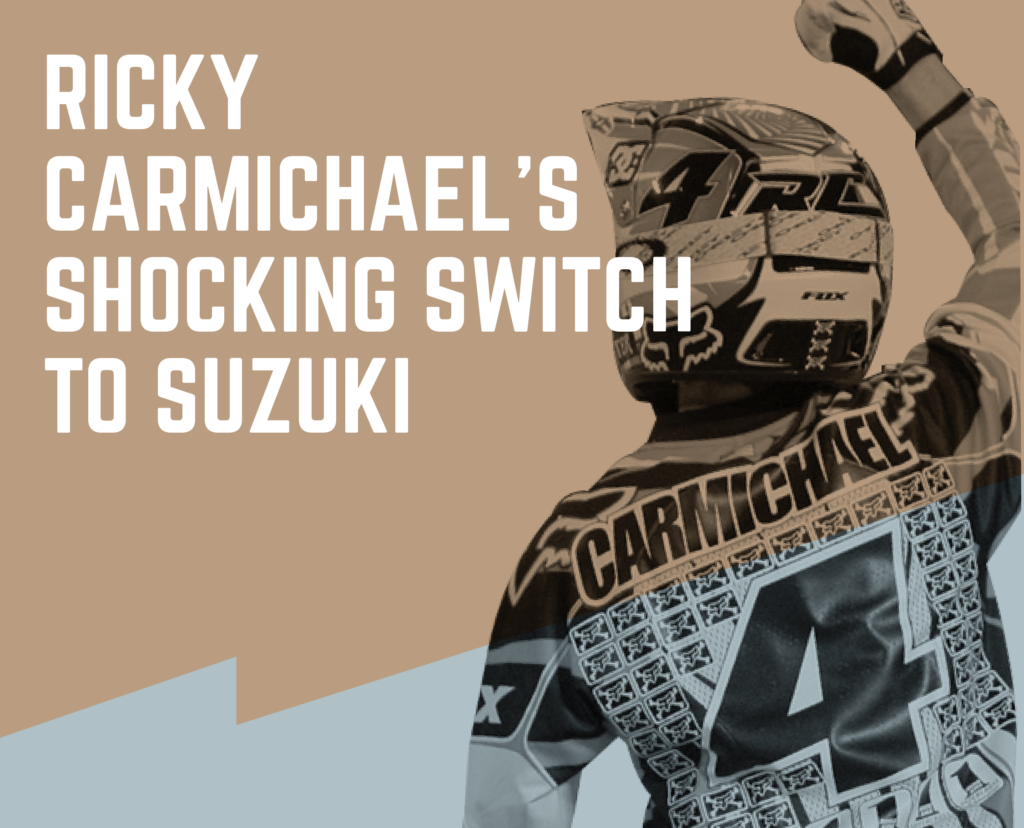
Part 9: Roger De Coster comes to the table
As a purveyor of dirt bike racing talent, Roger De Coster watches, listens and engages. He knows what’s going on, who’s not happy and where improvements can be made. In his ninth season as Suzuki’s Team Manager, De Coster still searched for the dominance he enjoyed when he was at Honda through the entire decade of the 1980s and early 1990s.
A talent like Carmichael becoming available was not going to slip by him unnoticed. De Coster’s relationship with Carmichael went back to Ricky’s days as a 125cc-riding teenager who popped into the Suzuki semi to chat up the veterans.

“He had mentioned to me that things were not going as smoothly as he expected them to,” De Coster says of Carmichael’s Honda negotiations. “I had let him know that I would love to talk with him. And I could feel that there was, after mentioning some things a few times, I could feel that there was an interest there.”
Moorman’s initial proposal to De Coster set forth terms important for Carmichael: market value compensation and the freedom to maximize other business opportunities in the marketplace. The barrier-breaking upfront compensation package didn’t phase De Coster.
“I’m always for the rider to make good money if he delivers,” De Coster says. “And I had no problem with thinking that way. I knew that if we gave him a good bike that he would win.”
Once Moorman had a soft commitment to those terms, he met De Coster at a neutral location between Orlando and Daytona during the first week of March, around the same time Carmichael took his walk on the beach with Stanton. He wanted to make sure Carmichael was a top priority to Suzuki and listen to De Coster. The two gelled.
FAST TRIVIA
How many total AMA races did Suzuki win in 2004 (all classes/series)?
“We had a great meeting,” Moorman says. “De Coster, as expected, was a straight shooter. He did not mince words and his plans for RC were impressive.”
De Coster instantly recognized Moorman wasn’t like other agents he’d worked with. “He actually was pretty smart and did a good job,” De Coster says. Although De Coster had already informed Harris and Kato that he wanted to pursue Carmichael and laid out the logistics and equipment required to make such a venture possible, he still worried about actually getting that support. He’d been through this before. Even though the McGrath deal came together less than two weeks before the 1997 season started, De Coster said he never felt like he had adequate backing to help McGrath succeed.
“We were not ready,” says Ian Harrison, who worked in research and development at Suzuki. “We didn’t have the parts and the manpower to support McGrath and it cost us.”
At the end of the Daytona Supercross, De Coster told Harrison that Carmichael-to-Suzuki was a serious possibility. “I thought he was messing with me at first,” Harrison says. “I said, ‘come on.’ Then of course I was so excited. I mean, flip, anyone would be.”

As the R&D director, Harrison stressed about having enough parts in stock for someone of Carmichael’s caliber. He started planning before ink touched paper. If they normally stocked five sets of titanium bolt kits for a race season, for Carmichael they ordered 20 sets. Harrison says extra wheelsets for Carmichael’s 2005 RM250 still sat on the shelves when he left Suzuki in September 2010.